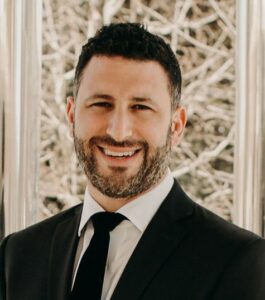Abogado Ramez Shamieh
Los clientes del abogado Ramez Shamieh lo han descrito como “un león que nunca se rinde”. La intensidad y energía que aporta a cada caso produce mejores soluciones para sus clientes y una sólida reputación entre sus colegas.

Propietario y socio gerente de Shamieh Law, el abogado Ramez Shamieh es originario de Lake Charles, Louisiana. Como estudiante universitario, asistió a la Universidad Metodista del Sur en Dallas, donde la confianza en el tribunal se estableció por primera vez en el campo de fútbol. SMU Mustangs ganó su conferencia todos los años que jugó, alcanzando la Final Four en 2000 y estableciendo el récord de la NCAA con la mayor cantidad de victorias en una sola temporada.
“Hay muchas similitudes entre el fútbol y la ley”, dice el Sr. Shamieh, quien cuenta a Diego Maradona como uno de los héroes de su infancia. “La práctica, la planificación estratégica y el trabajo duro crean éxito. Abordo el trabajo de prueba como una competencia, y no me gusta perder “.
`La Universidad de Tulane ofrece tanto derecho civil como educación de derecho consuetudinario, lo cual lo intrigó. Experimentar el huracán Katrina como estudiante de Tulane tuvo un gran impacto en su vida. “Estar en la facultad de derecho durante esta tragedia me enseñó humildad y no dar nada por sentado”, dice el Sr. Shamieh.
Se graduó en 2007 y regresó a Dallas, donde comenzó su carrera en una pequeña firma de lesiones personales. Luego se mudó al galardonado McCathern Law Firm, que brinda asesoría legal para los Dallas Cowboys. Durante sus seis años con McCathern, el Sr. Shamieh estuvo inmerso en un amplio espectro de leyes: casos de negligencia, responsabilidad del producto, accidentes automovilísticos, demandas por defectos de productos, accidentes en el lugar de trabajo y en el lugar, accidentes aéreos, casos de mordeduras de perros, accidentes DWI, vehículos de 18 ruedas. colisiones y colisiones de autobuses, así como otros litigios de lesiones personales. Surgió bien versado en las estrategias que los litigantes experimentados aplican a los acusados de la fuerza para resolver demandas, en lugar de luchar contra ellos.
“Puedo identificar la evolución de mi estilo legal en un caso específico de accidente automovilístico”, dice el Sr. Shamieh. El caso involucraba un camión de 18 ruedas que viajaba a más de 60 mph. Se estrelló contra una víctima inocente que estaba completamente paralizada. Los resultados fueron catastróficos.
“La única forma en que podía entender realmente el daño mental, físico y financiero de este hombre era estar allí a su lado”, dice el Sr. Shamieh. “Estábamos al teléfono todo el tiempo. Me senté cara a cara con él una vez al mes. Ahí es cuando realmente se hunde. Cuando ves el dolor en la cara de tu cliente, escúchalo en su voz, quieres luchar por ellos “.
Una estrella en ascenso
El Sr. Shamieh prosperó como un abogado prometedor. Fue nominado cada año a la lista de Rising Star de Super Lawyers cada año entre 2014-2017 y nombrado “Lawyer on the Rise” por la revista Texas Lawyers.
Shamieh obtuvo una calificación perfecta de 10.0 Avvo y una calificación de satisfacción del cliente de “10 mejores” con el American Institute of Personal Injury Attorneys.
La compasión se ejecuta en la familia
El estrecho vínculo marcó un punto de inflexión en la carrera del Sr. Shamieh. Combinó sus modales compasivos con su campaña para buscar justicia para los heridos. El Sr. Shamieh aprendió que el primero se crió en una familia de profesionales médicos. Su padre, Fayez Shamieh, MD, es un neurólogo reconocido a nivel nacional. Su hermano, K. Samer Shamieh, MD, es un destacado cirujano de columna vertebral en Gulf South. Estas relaciones familiares con profesionales de la salud le dan una ventaja al crear un equipo médico para sus clientes.
“Cuando era niño, trabajaba en el consultorio médico de mi padre, y fui testigo de pacientes que estaban tan agradecidos de que mi padre los ayudaba”, dice el Sr. Shamieh. “Aprendí que algún día haría una diferencia en la vida de las personas”.
Aunque el Sr. Shamieh encontró un éxito profesional en Dallas, ¡nunca olvidó sus raíces de Luisiana ni su afición por el gumbo! El abogado Ramez Shamieh tiene licencia en Texas y Louisiana. Esto significa que aporta un nuevo estándar de defensa, pasión y cuidado a las víctimas de lesiones tanto en su hogar como en los estados adoptados.
El Sr. Shamieh representa activamente a las víctimas de lesiones personales en Texas y Louisiana y pronto abrirá una oficina en Lake Charles, Louisiana para ayudar mejor a sus clientes en Louisiana.
“Los jurados en Texas y Louisiana son muy similares”, dice el Sr. Shamieh. “Son lo suficientemente inteligentes como para analizar la evidencia y, cuando corresponde, otorgar veredictos favorables a mis clientes”.
Shamieh Law se mantiene ocupada, pero el Sr. Shamieh responde su teléfono todo el día. “No hay nada mejor que ser parte de un gran equipo”, dice. “Así es como mi empresa supera a mis competidores”. Cada nuevo cliente es una nueva oportunidad de ganar “.
El abogado de lesiones personales Ramez Shamieh y cada miembro de su equipo ofrecen orientación personal para proteger los derechos de las víctimas y sus seres queridos en los Estados de Texas y Louisiana.
Si usted o alguien que usted conoce ha estado involucrado en un accidente automovilístico, ha tenido una muerte por negligencia, ha tenido un accidente laboral o ha sido lesionado por un defecto del producto, comuníquese con Shamieh Law.
Shamieh Law ofrece una evaluación de caso gratuita para clientes en Texas o Louisiana, independientemente de su capacidad de pago. Además de eso, el abogado Ramez Shamieh y su equipo solo reciben un porcentaje de su compensación exitosa.
- Car Accident Lawyers
- Truck Accident Lawyers
- Wrongful Death Lawyers
- Motorcycle Accident Lawyers




